
views
- Ignore calls from 3-digit international area codes that are likely to be scams, including 232, 268, 284, 473, 664, 649, 767, 809, 829, 849, and 876.
- Be wary of calls from unknown numbers with your own area code. These may be international caller ID spoof scams that appear local.
- Sign up for the FTC’s National Do Not Call Registry and ask your phone provider about robocalling blocking options to reduce the number of scam calls you get.
Most Common Scammer Area Codes
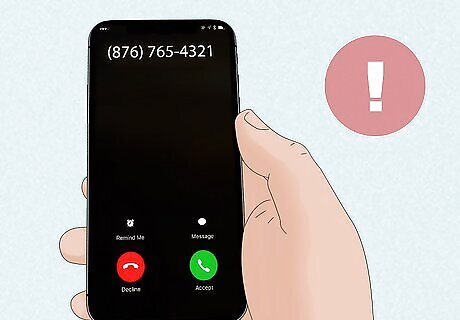
Don’t answer unknown calls from these area codes. While any unknown phone number can be a potential scam, certain area codes appear more commonly. If you don’t recognize a phone number with these area codes, do not answer. The caller may be trying to get personal information from you or trying to make you call an international (likely Caribbean) number and rack up costly per-minute fees. Instead, check your voicemail afterward to see if it was a legitimate caller, or Google the phone number to see if it’s associated with any known scams. International area codes to avoid: 232: Sierra Leone 268: Antigua and Barbuda 284: British Virgin Islands 473: Grenada, Carriacou, and Petite Martinique 664: Montserrat 649: Turks and Caicos Islands 767: Commonwealth of Dominica 809, 829, 849: Dominican Republic 876: Jamaica Domestic area codes to avoid: 216: Cleveland, OH 469: Dallas, TX 657: La Palma, CA 332, 347, 646: New York City, NY 218: Northern Minnesota 712: Western Iowa If you know someone from these areas, reach out to them directly with their last known phone number, by email, or on social media to confirm if it was them who called you.
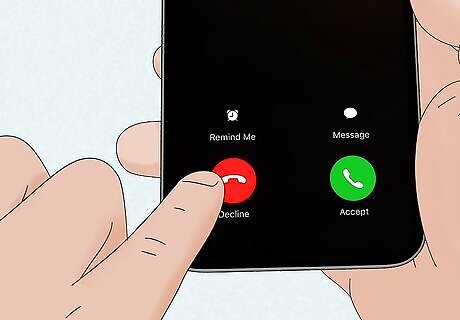
Ignore calls from unknown numbers using your area code. Some scam callers will “spoof” their identity so a phone number different from their own will appear on your caller ID (this is called caller ID spoofing). Scammers will often spoof the number so it begins with your own area code to look like the call is local or coming from someone you may know, even though it’s likely international or from someone seeking your personal information. In some cases, all but the last 4 digits of the phone number may resemble yours. If you don’t recognize a number with your area code, let the phone ring or end the call without answering to avoid the scam. If it’s someone who knows you, they’ll likely leave a voicemail and share their identity. Before calling back, listen to the caller’s voicemail (if they left one) to see if it’s someone you recognize. If not, Google the phone number itself—if it’s a scam, chances are someone has posted about it or flagged it on a scam phone number database. Caller ID spoofing can happen in any area code, but these are the US area codes where it occurs most frequently: 602, 623: Phoenix, AZ 214: Dallas, TX 832: Houston, TX 210: San Antonio, TX 404, 678: Atlanta, GA 704: Charlotte, NC 702: Las Vegas, NV 407: Orlando, FL
Common Types of Phone Scams
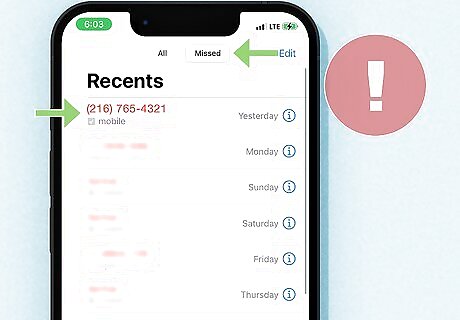
“One ring” scams Scammers will call your phone number and hang up after the first ring to pique your curiosity and have you call the number back. These numbers are often international and come from countries that have 3-digit area codes that resemble US area codes (for example, area code 232 is from the country of Sierra Leone). If you call back, you’ll be charged fees and/or per-minute charges for calling internationally, in addition to potentially losing money or private information to the scammer. To avoid this scam: Don’t answer or return calls from numbers you don’t recognize. Check to see if the unknown area code is international before calling back, and consider asking your phone service carrier to block outgoing international calls from your line (unless you have a legitimate need to call internationally).
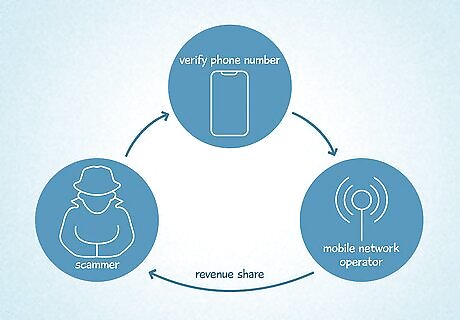
Traffic pumping scams By federal law, rural phone service carriers can charge wireless and long-distance carriers higher fees for calls to local subscribers. Some rural carriers then partner with chat lines, adult entertainment numbers, “free” conference call providers, or even international numbers to artificially inflate the call volume in their home area code. This lets them bill wireless and long-distance carriers large amounts of money, which then gets passed onto private consumers. Some calls begin with a warning about higher charges, while others are assumed to be free (until the consumer sees the charges on their next phone bill). The area codes 712 (western Iowa) and 218 (northern Minnesota) are particularly well-known for this type of scam. To avoid this scam: Do not answer or call back calls from any numbers you don’t recognize (especially with a 712 or 218 area code). Google the phone number to see if it’s associated with any known scam accounts or with any chat lines or other organizations that charge premiums or fees to connect.
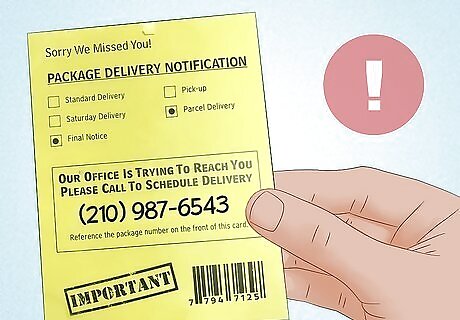
Package delivery scams Scammers may leave a voicemail with a callback number or leave a “missed delivery” tag on your door with a phone number to call indicating that you have a pending delivery. In some cases, they may text or email you with a “tracking link” that you’re urged to open. Do not call these numbers back, as they may be international and costly (similar to the “one ring” scam) or take you to an “operator” who requests personal information. Never open links from unknown senders, either, since these can prompt you to enter personal information or infect your device with malware. To avoid this scam: Do not call the phone number or open the provided link. If you’re expecting a delivery, contact the retailer or sender directly or go to the delivery carrier’s website to track your package. Never trust in any “urgent content” (like messages about package deliveries, promises of easy money, or indicating that something really bad happened to your bank account, for example) from unofficial or unknown numbers. Do not share your credit card information or deposit money into requested bank accounts until you’re sure the recipient is legitimate.
Protecting Yourself from Phone Scams
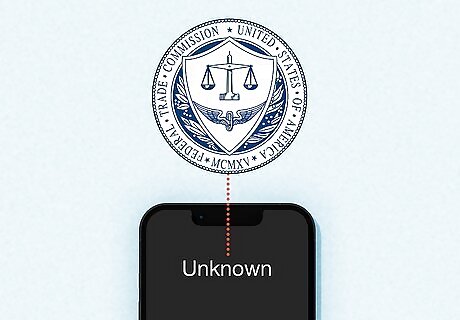
Sign up for the FTC’s National Do Not Call Registry. The Federal Trade Commission (FTC) operates a database where consumers can elect not to receive telemarketing calls. This won’t stop all spam calls, but it will make them easier to identify. Most legitimate telemarketers will not contact you if you’re on the registry, meaning any unknown numbers that you see are likely to be scams.

Contact your phone service provider about scam call blocking options. Some providers have functionalities to help identify, screen, or block scam calls from reaching your line. US carriers are already federally required to block calls with evidence of caller ID spoofing or other tampering, but they may not automatically block domestic robocalls or other scams from unchanged numbers. Contact your provider to learn about the options they offer—just be aware that these services may cost extra. Inquire about services to stop scam texts as well, since US federal regulations about blocking scam calls do not apply to text messages.

Try using a robocalling blocking app. There are several helpful mobile apps and devices out there that can identify, screen, and block scam numbers for you. Popular and reputable options include: Hiya: This service auto-blocks fraudulent calls and brands your own caller ID so you don’t appear as an unknown caller. YouMail: This service has a telephone sensor network that identifies and blocks scam calls and provides data on phone activity fraud to companies nationwide. RoboKiller: This app blocks both spam calls and texts and is an easy-to-use option for individual cell phone users.
Reporting Phone Scams
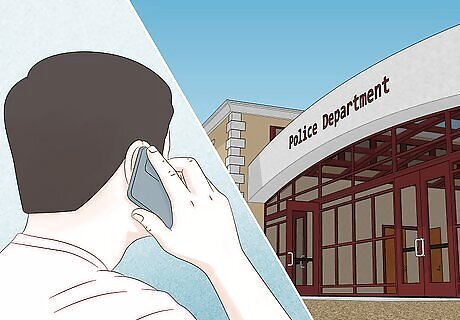
Contact local police and your state’s consumer protection office first. Gather all of the information related to the scam, including any phone numbers involved, and report the scam to your state’s consumer protection office (often a division of your state Attorney General’s office). If you’re not sure how to submit a complaint, search for your state’s office information using this form from USA.gov. Also file a police report if you lost any money, possessions, or personal information. Your local police may not be able to track down the scammer themselves, but having a report on file may support your claims to your phone service provider and other organizations like the FCC or FTC.
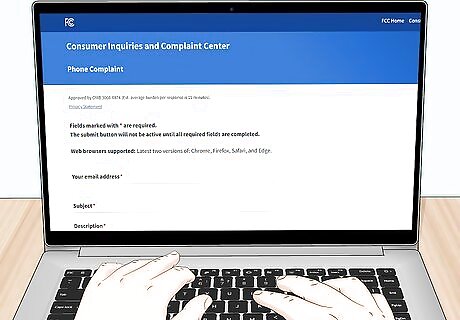
File a complaint with the Federal Communications Commission (FCC). If you were billed for a call you made as a result of a scam, first contact your telephone company to try to resolve the issue. If they’re unable to resolve the problem directly, file a free complaint with the FCC. Visit their phone complaint form page and enter the requested information about the scam. The FCC will pass your complaint on to your service provider, who then has 30 days to send you a response to your complaint. If the scam was international, also submit a complaint with the Federal Trade Commission (FTC) using their fraud report form.




















Comments
0 comment